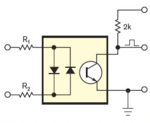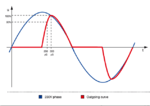dumi
Member level 3
Hi guys,i am using 600V triac with the resistor existing on the dat sheet of a moc 3023,for light dimmer.My light it doesn't come on when unless I take my multimeter and connecting cross pin 6 and pin 5 of moc 3023, I am supplying my moc with 12V from PWM(pulse width modulation) and the current is 1mA



